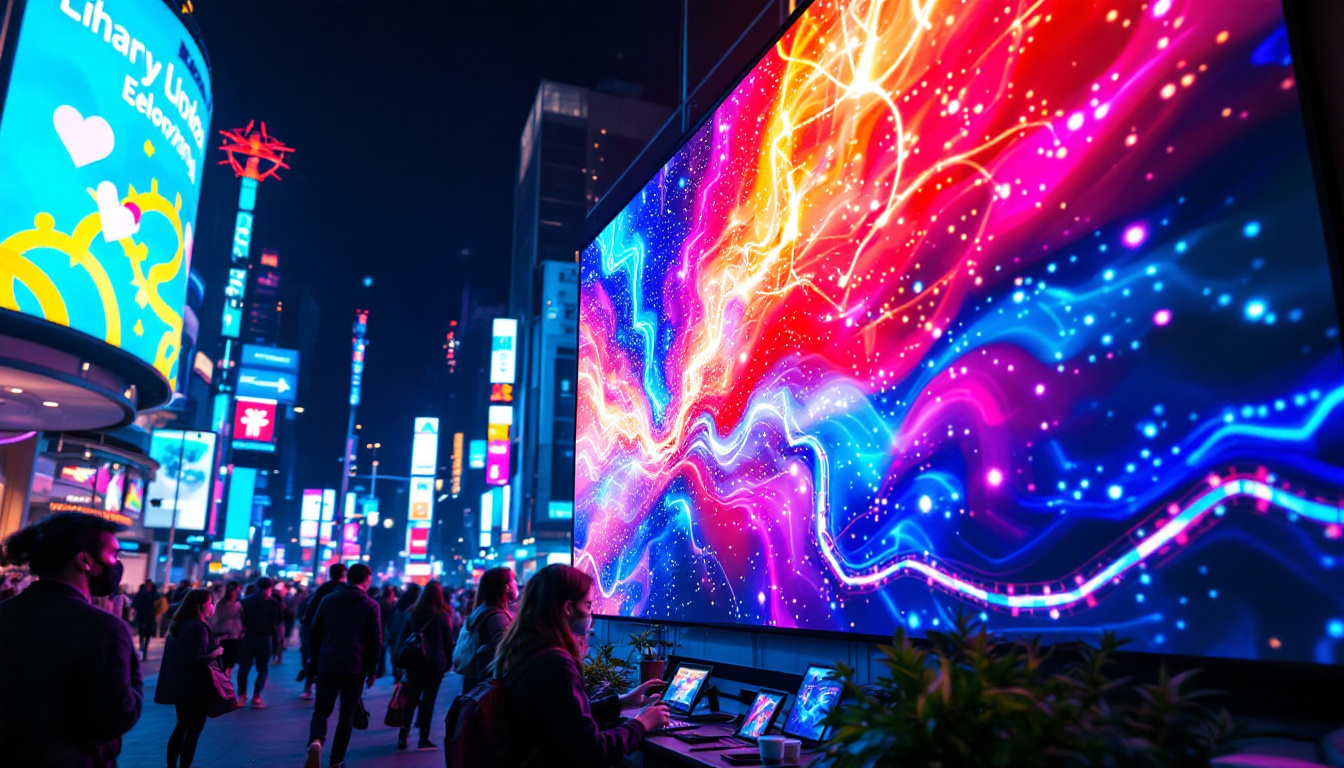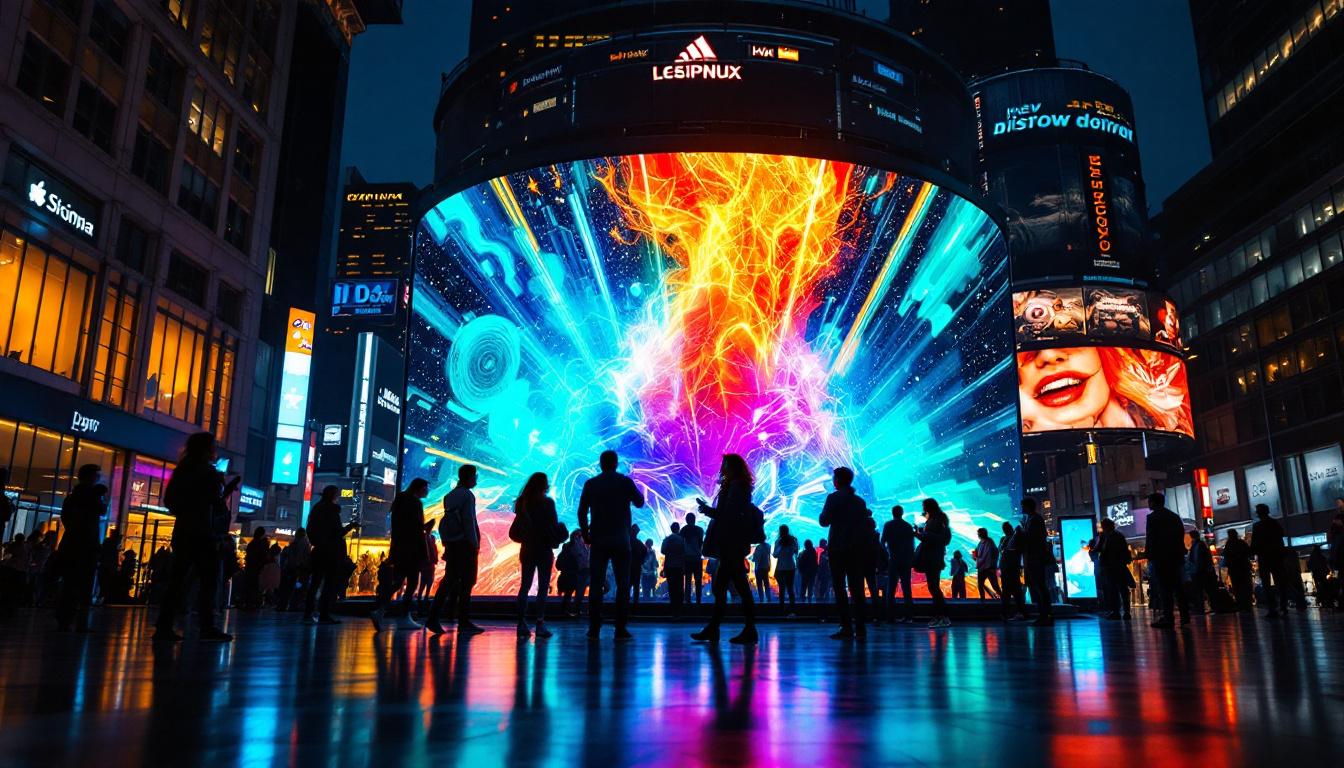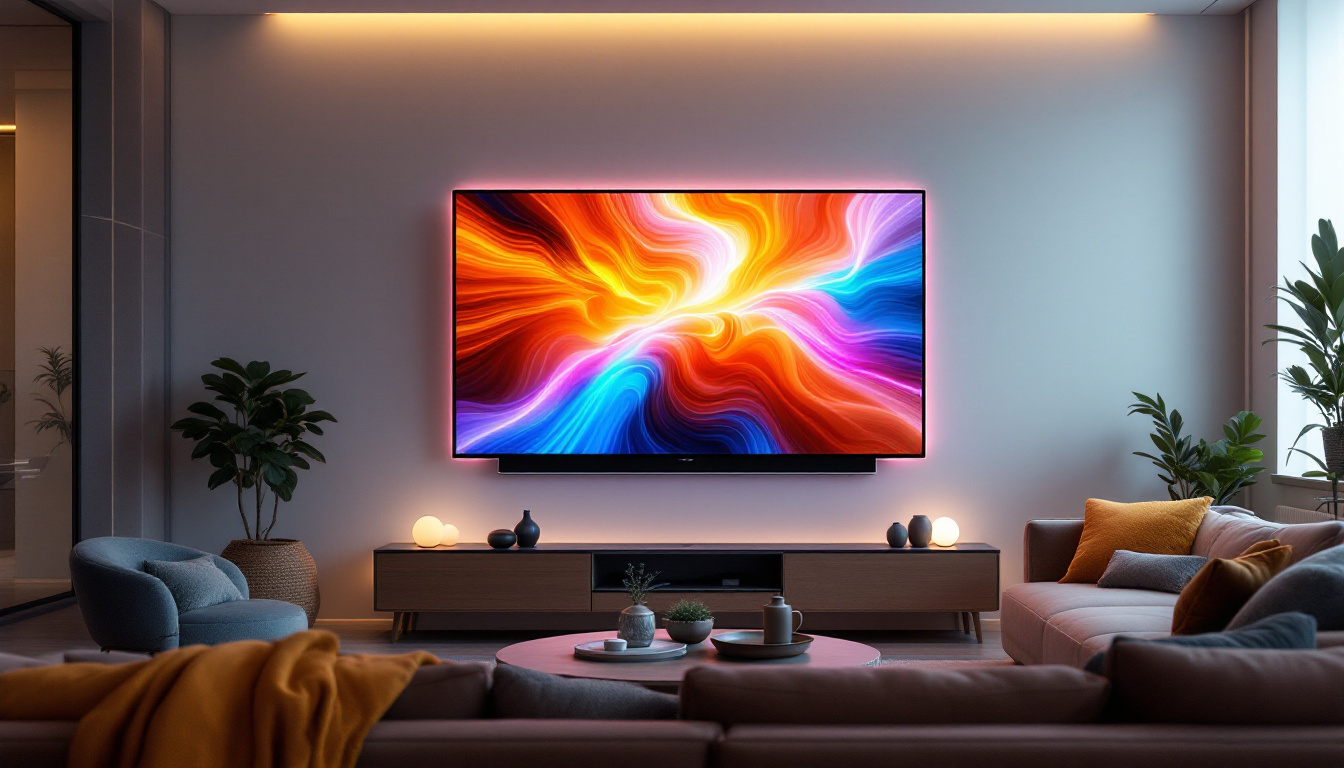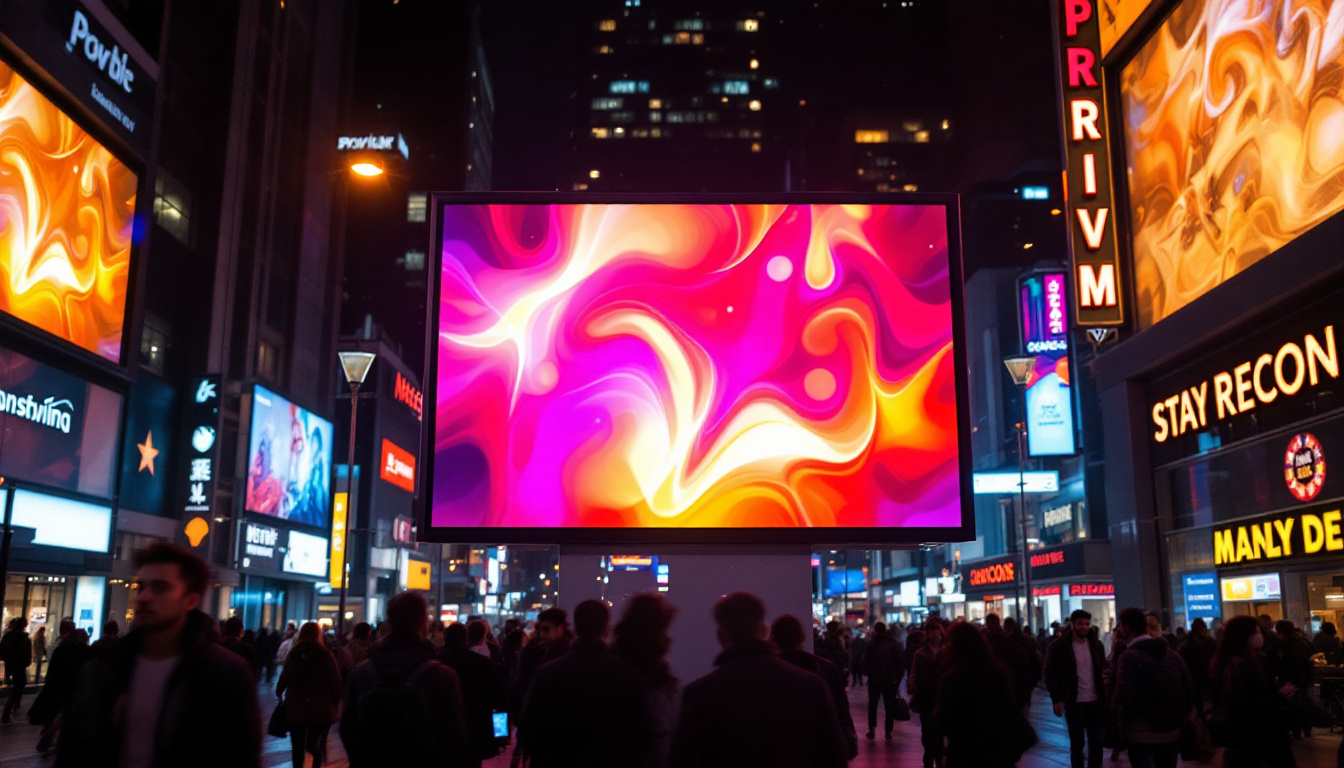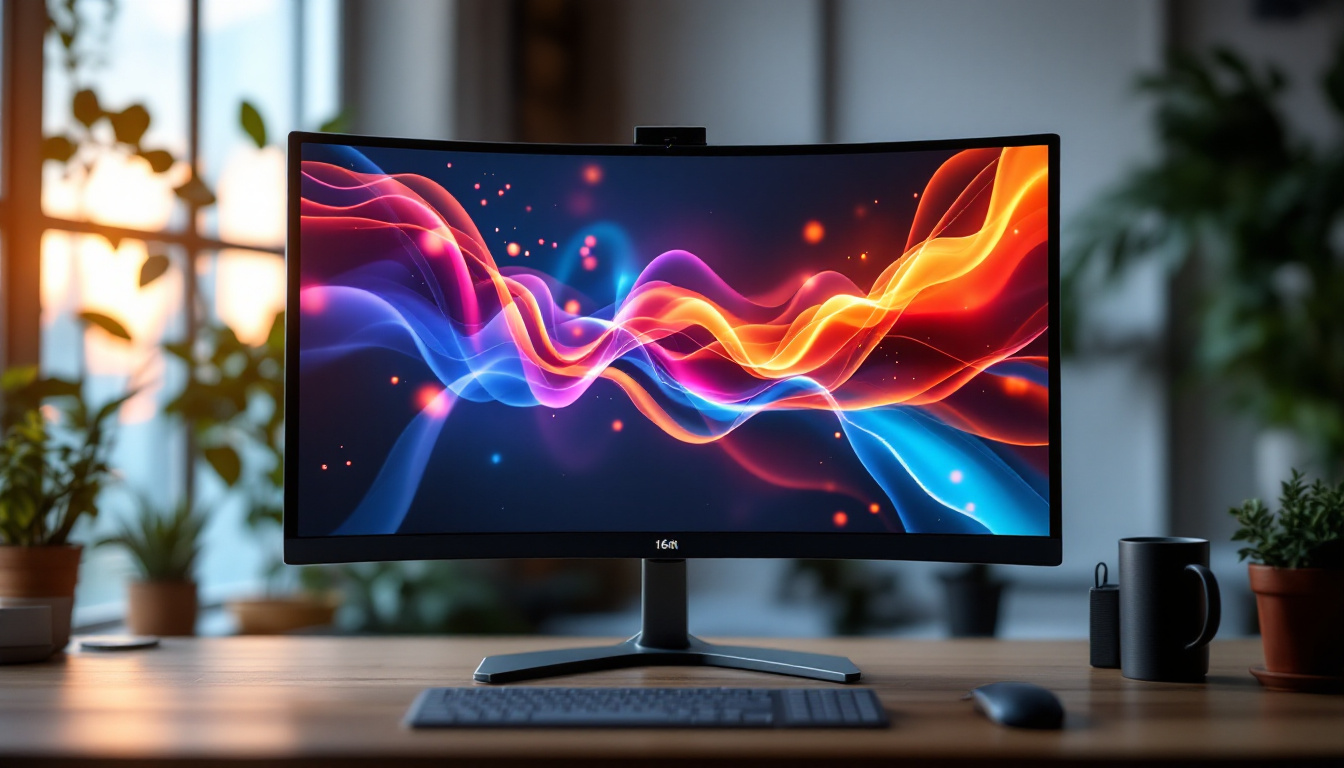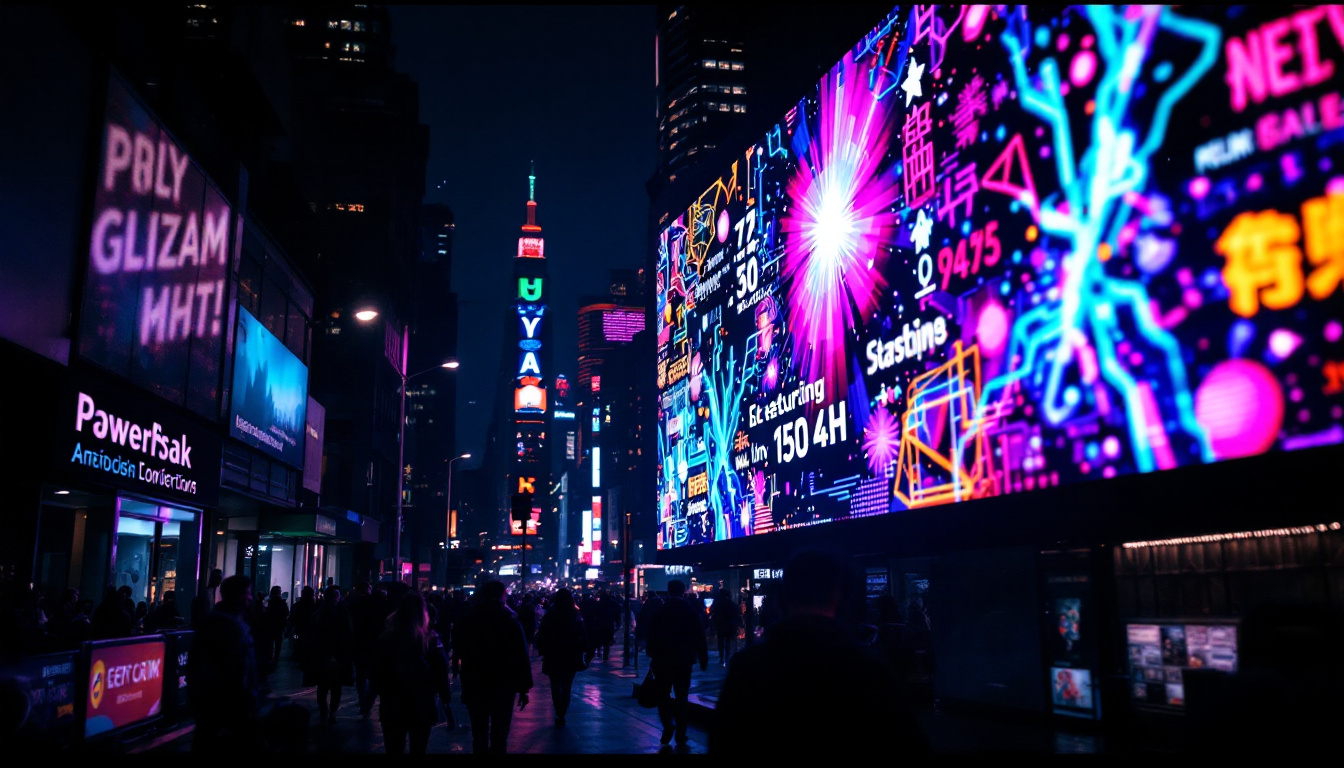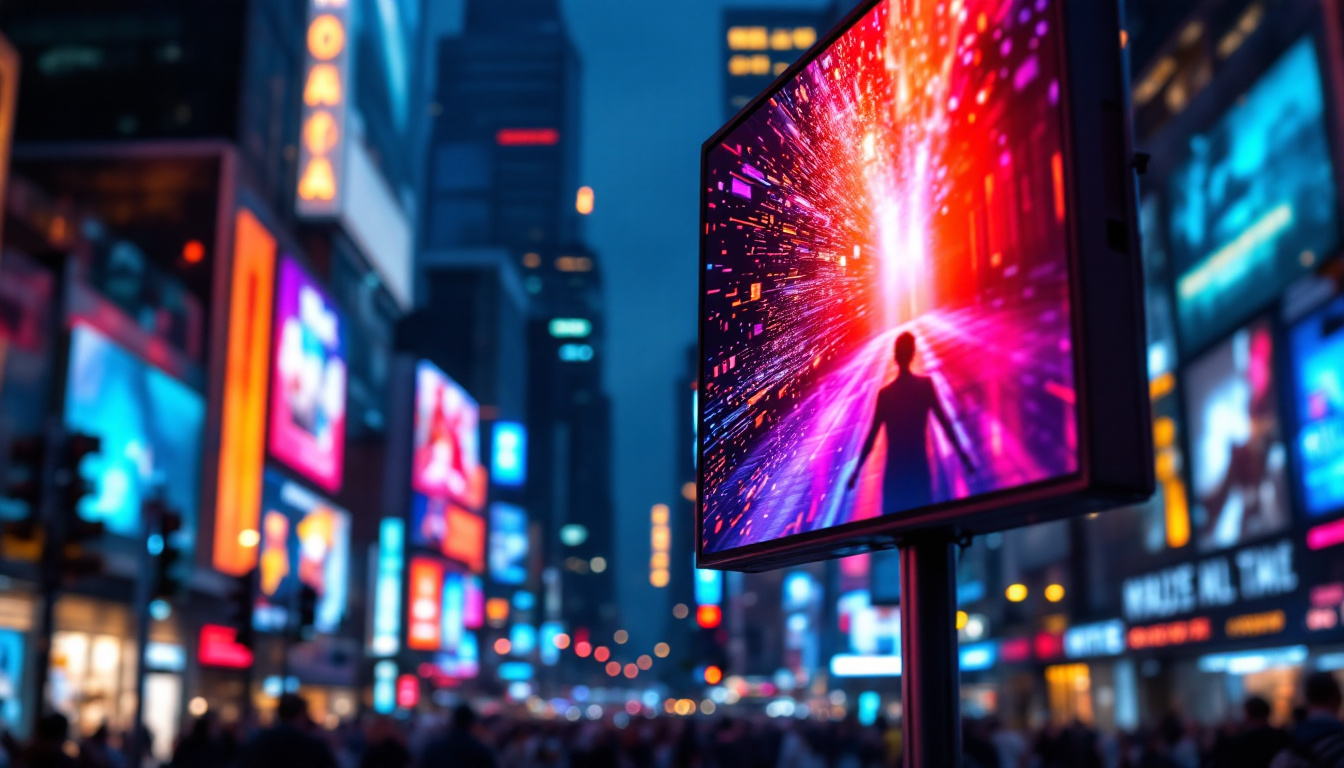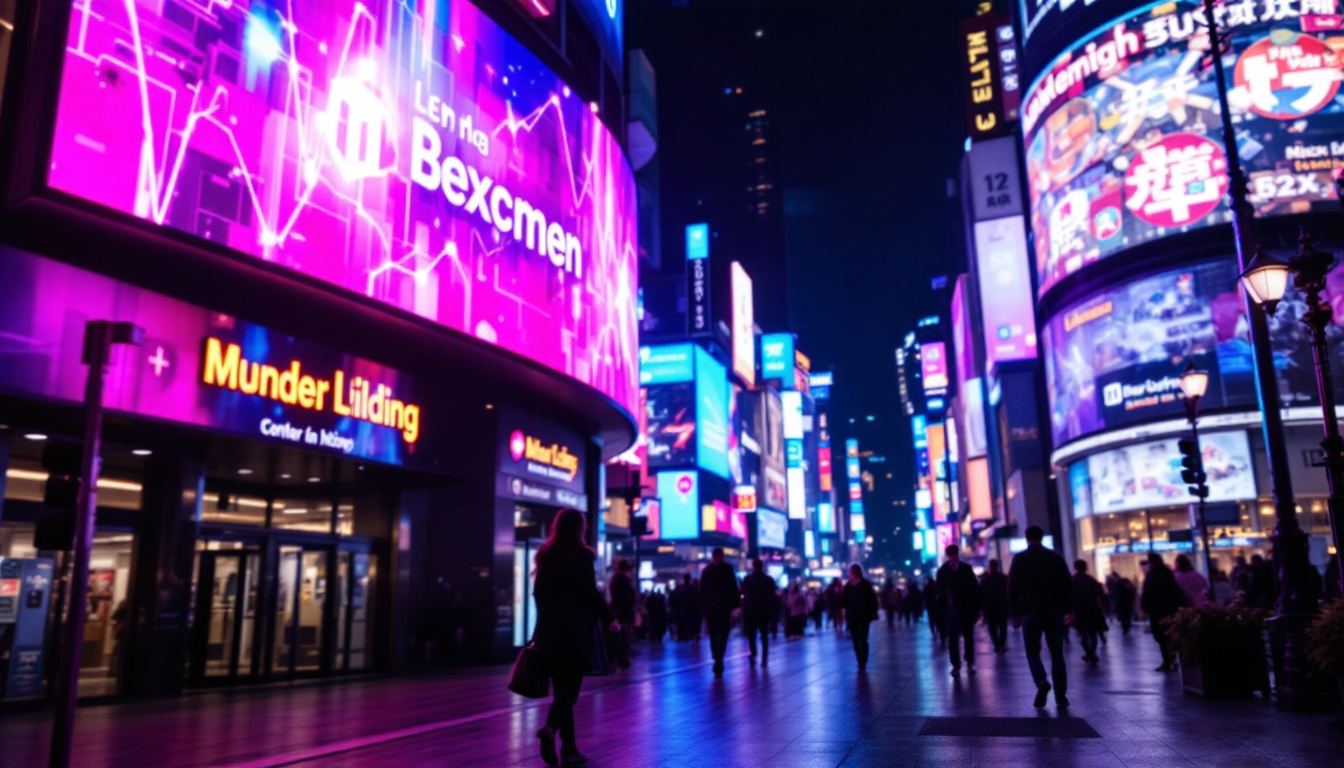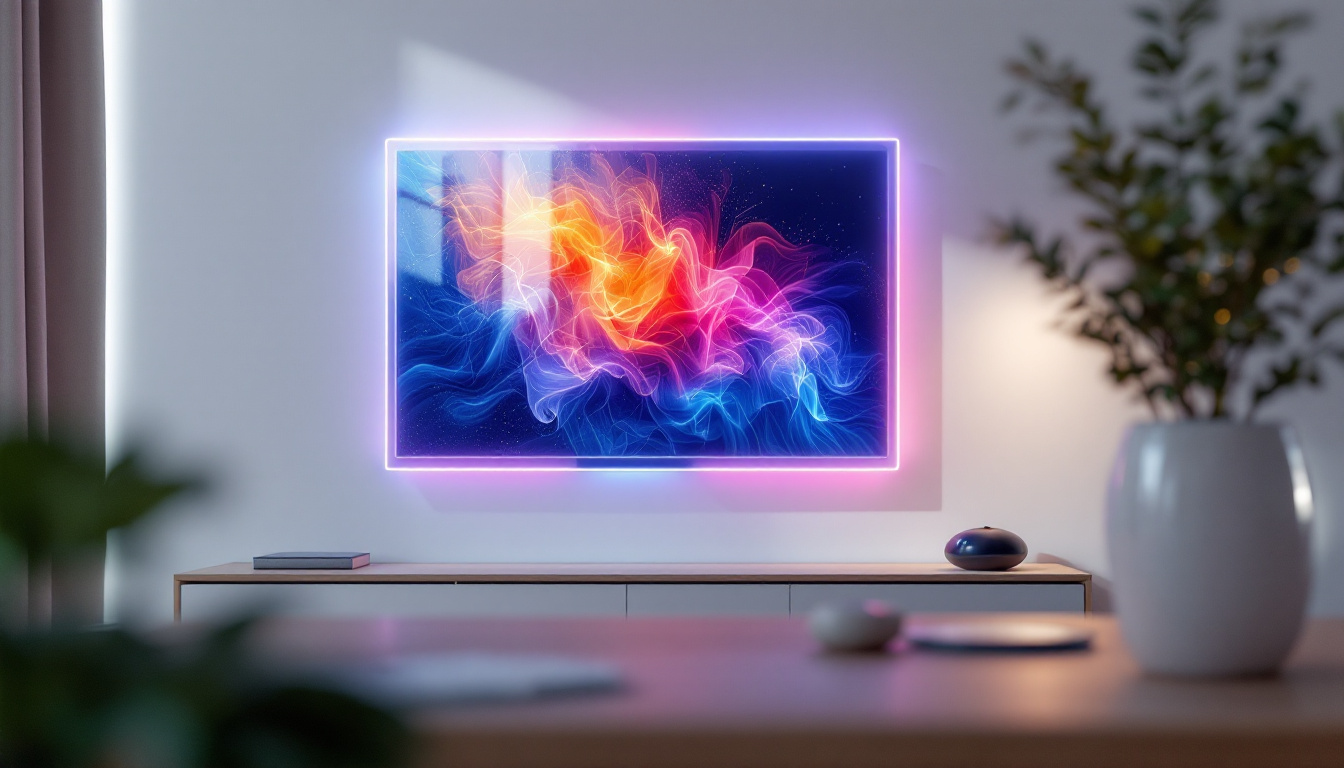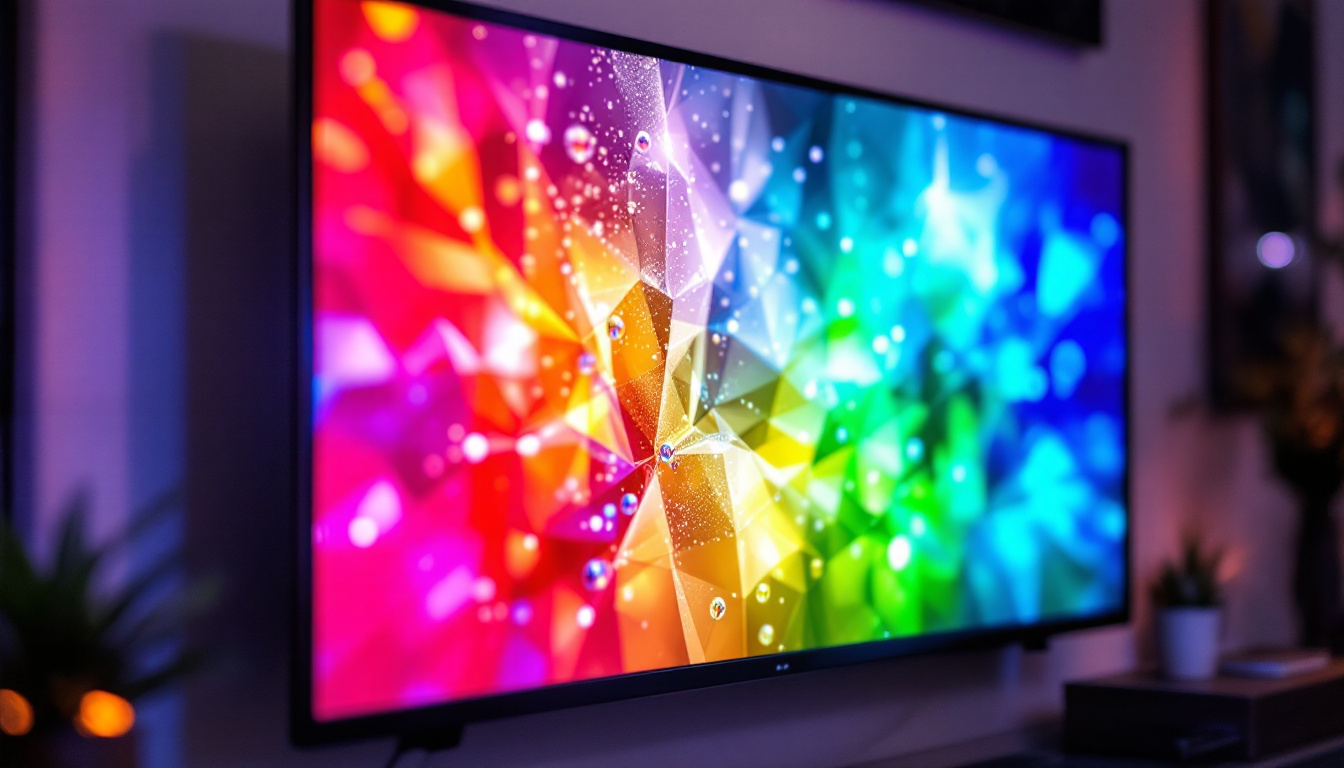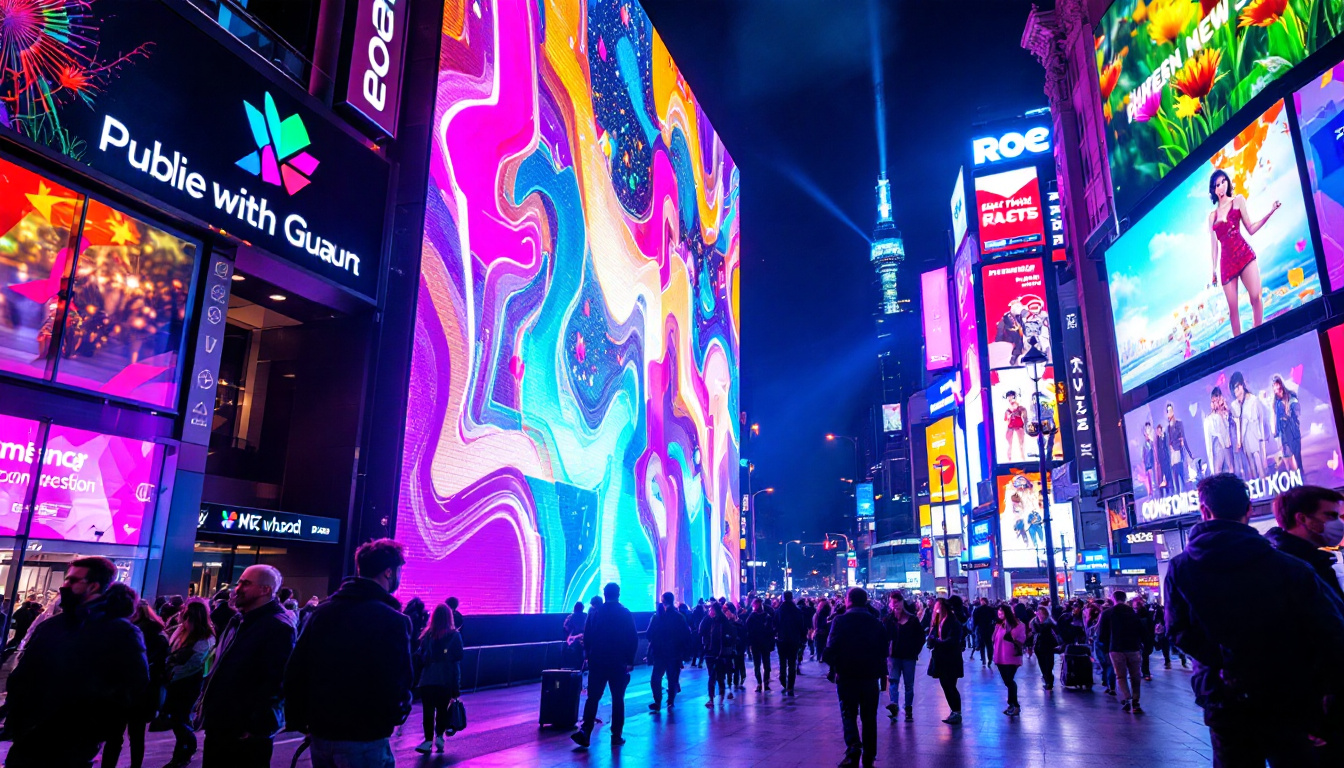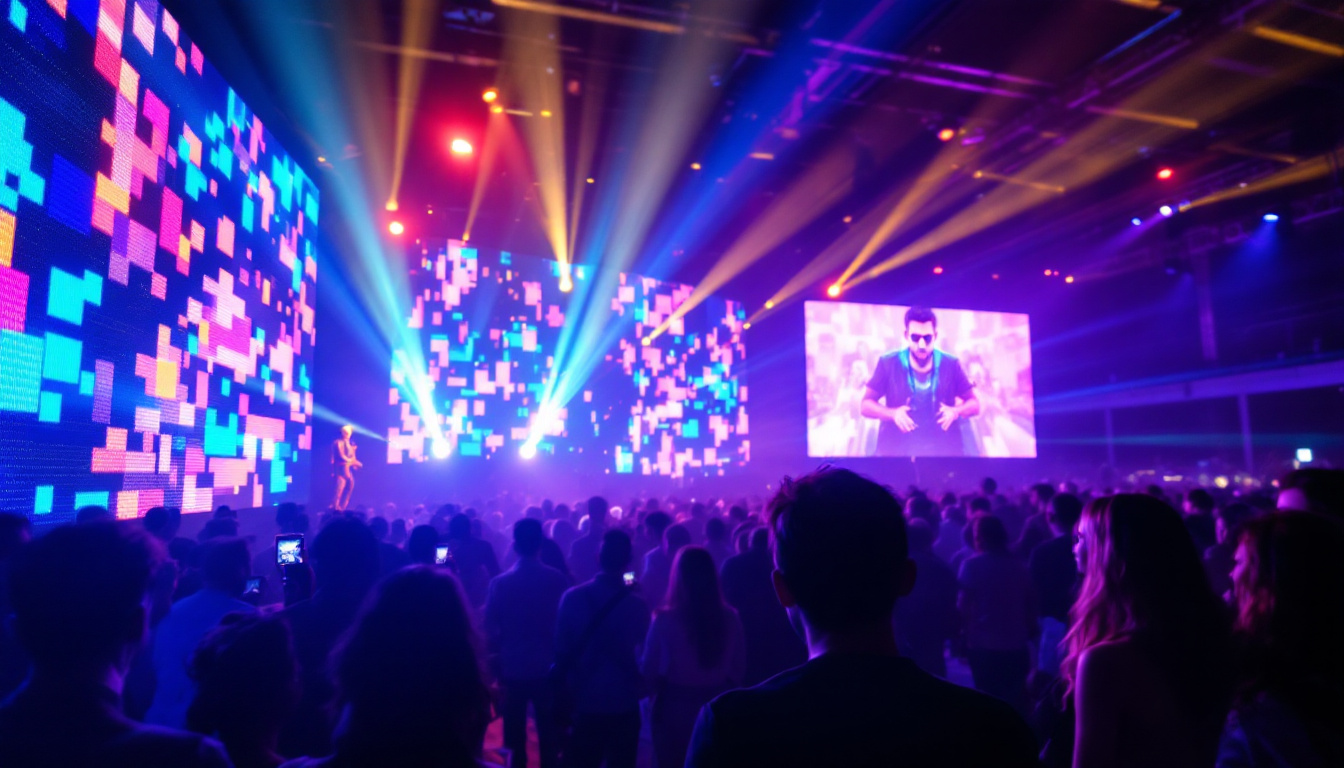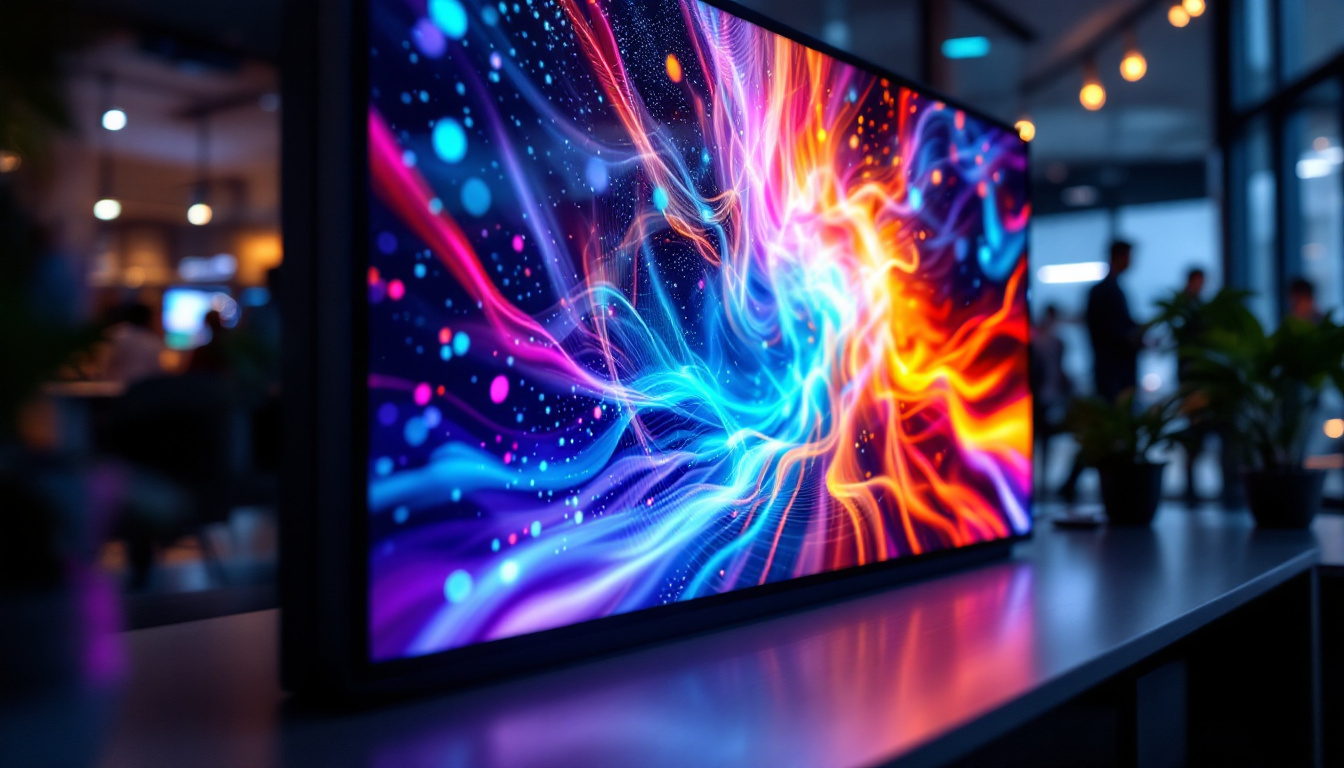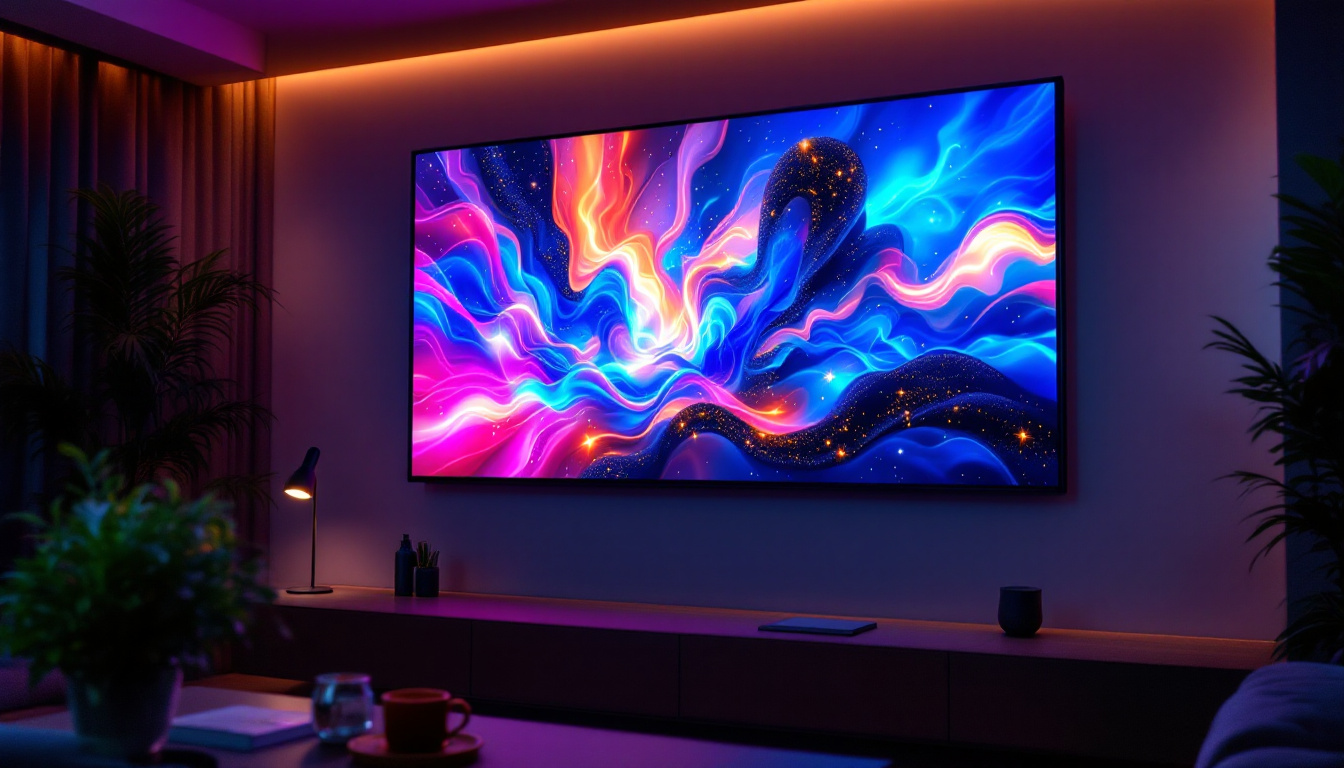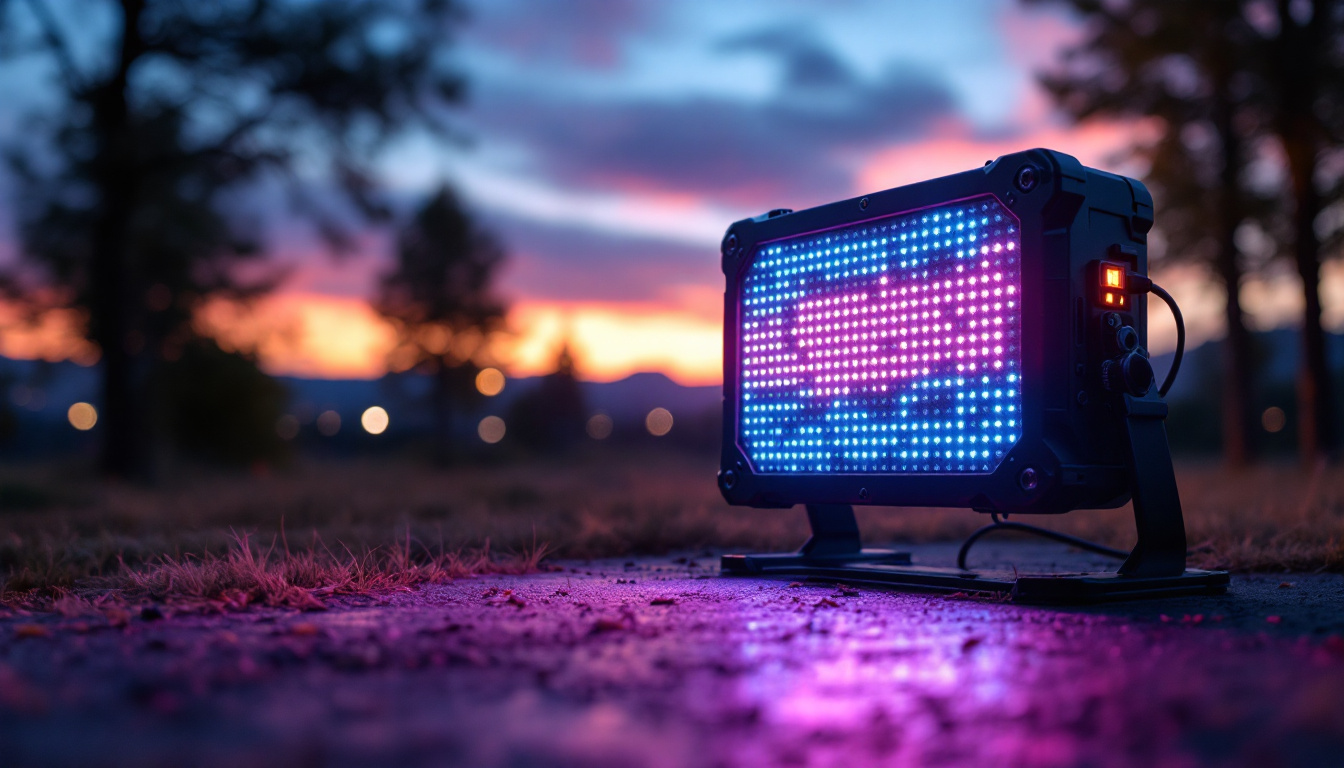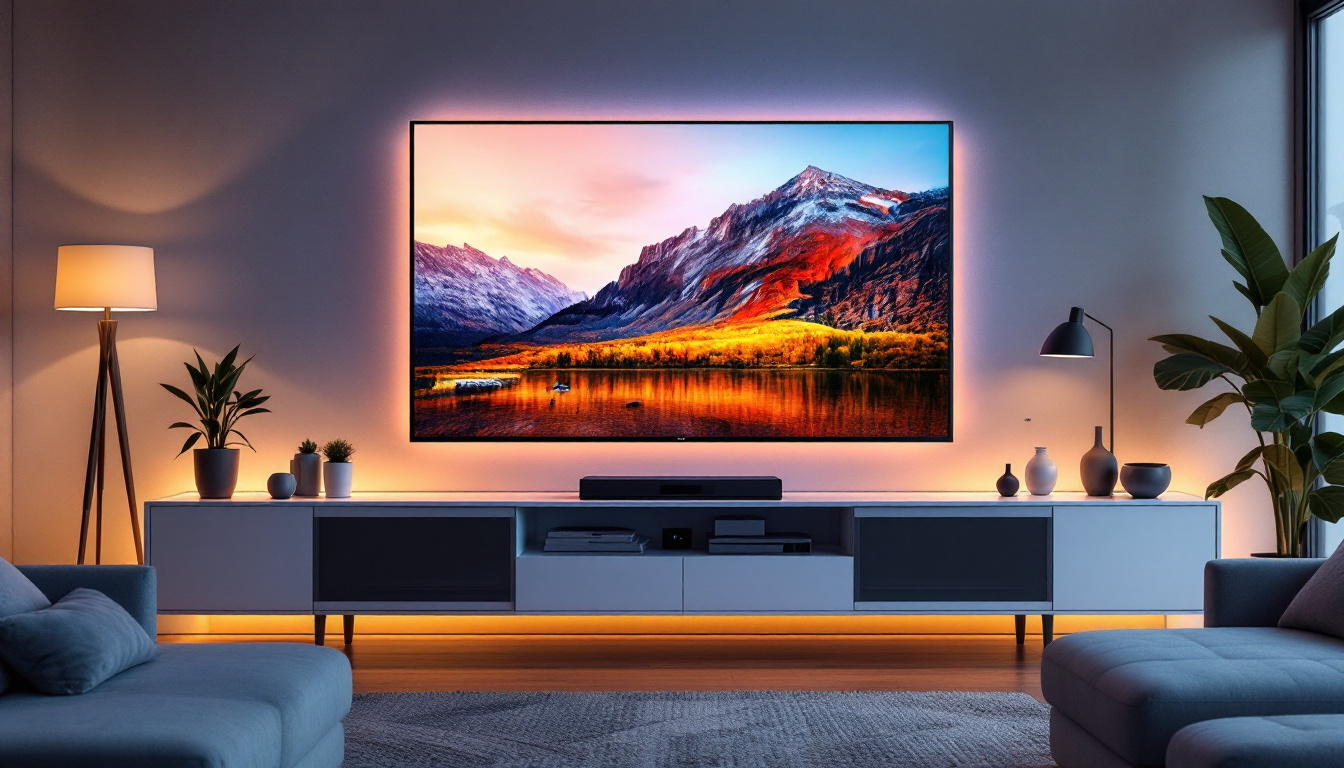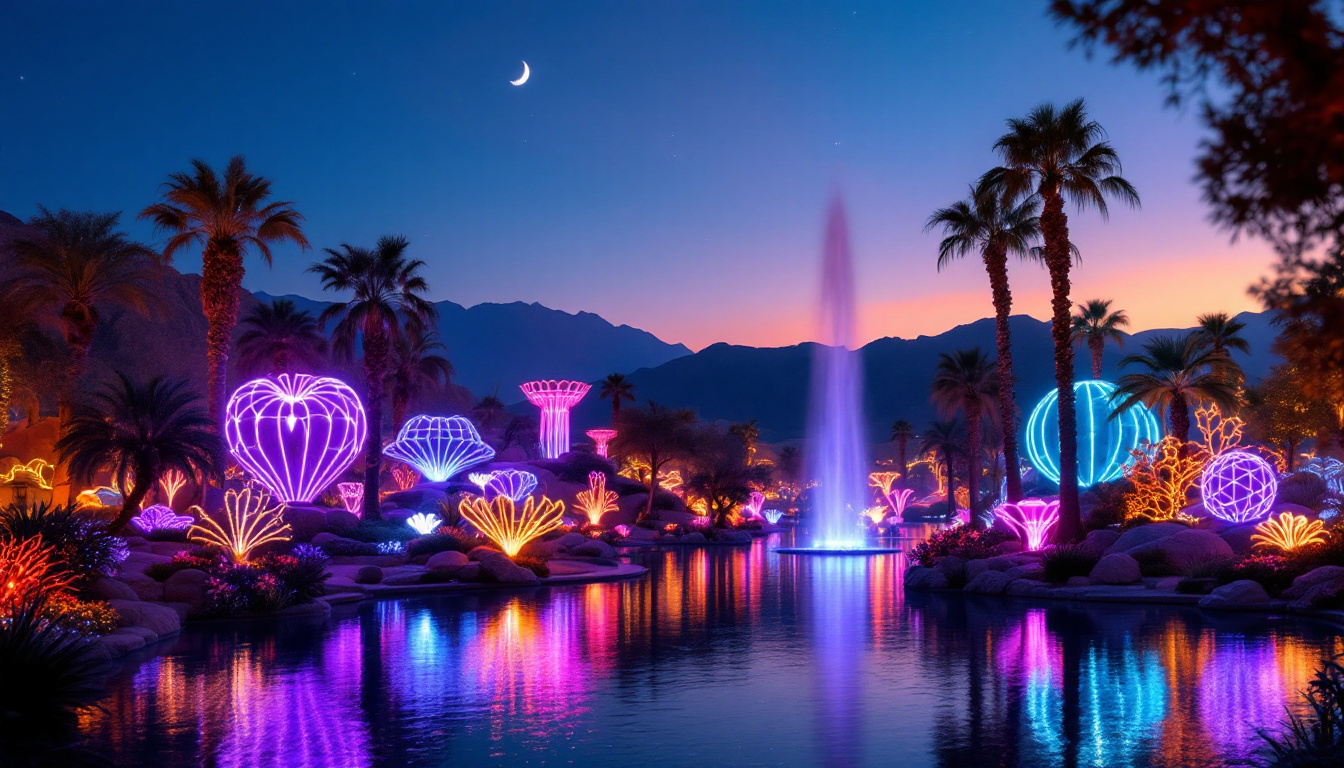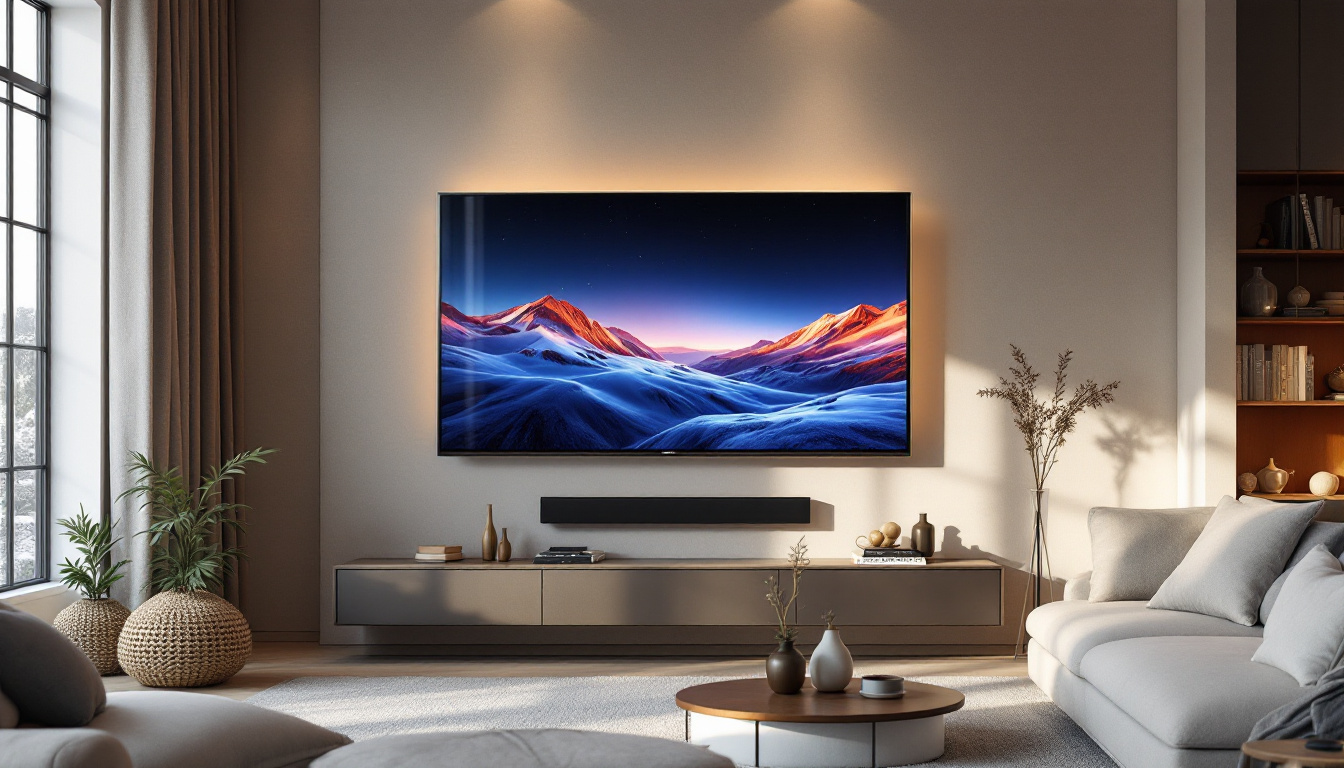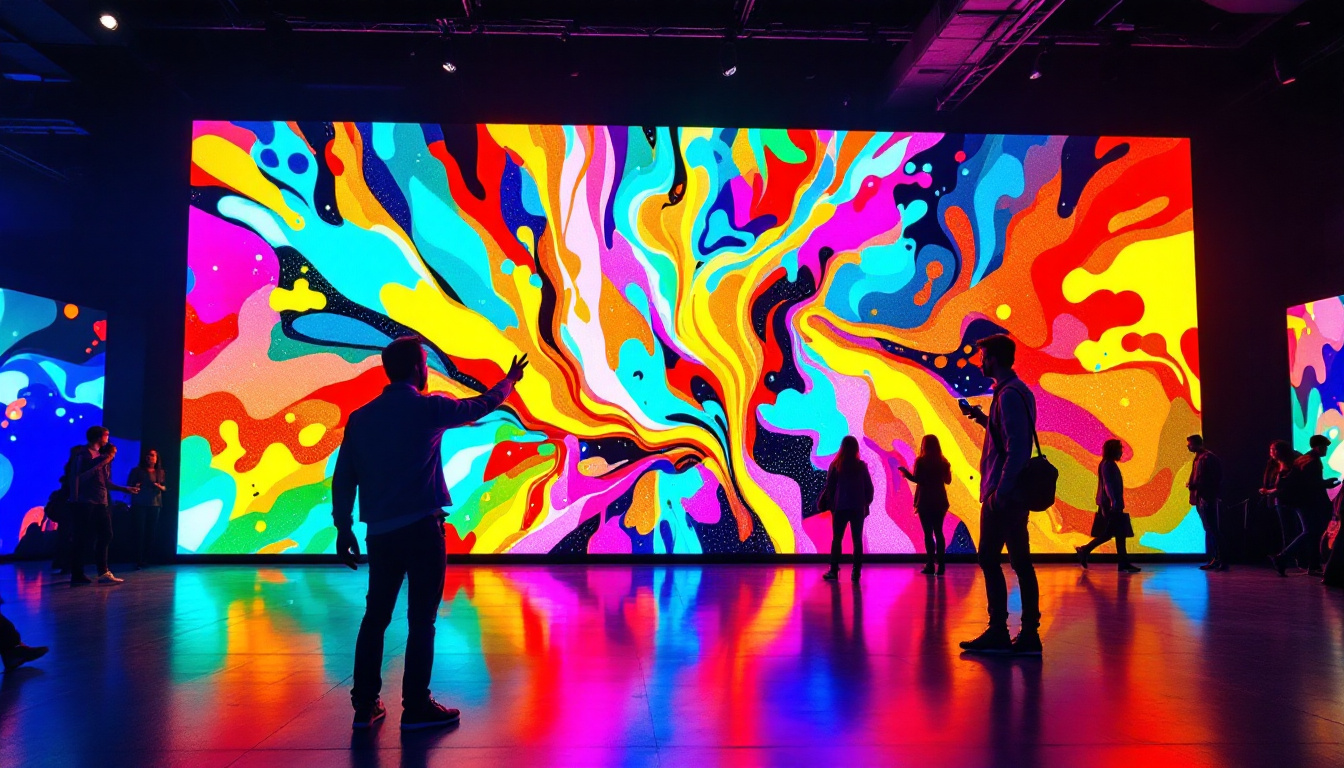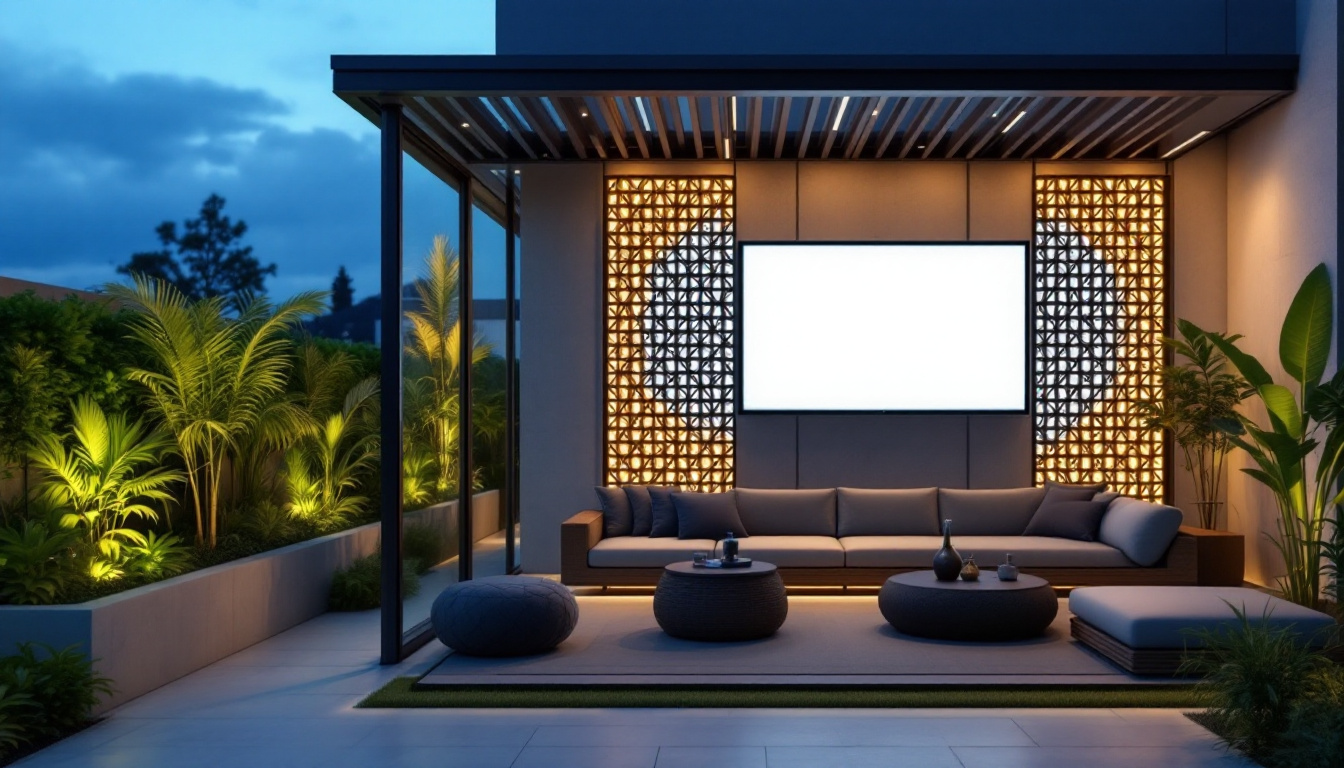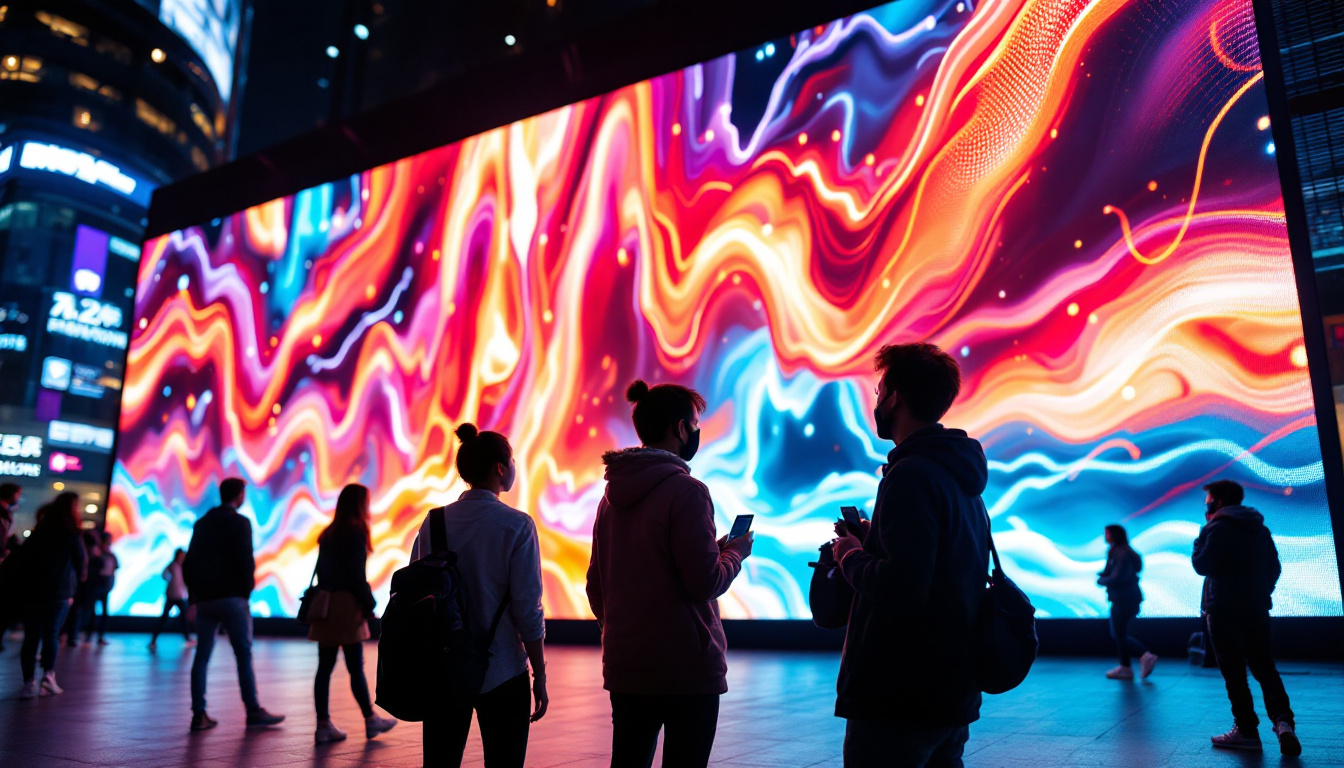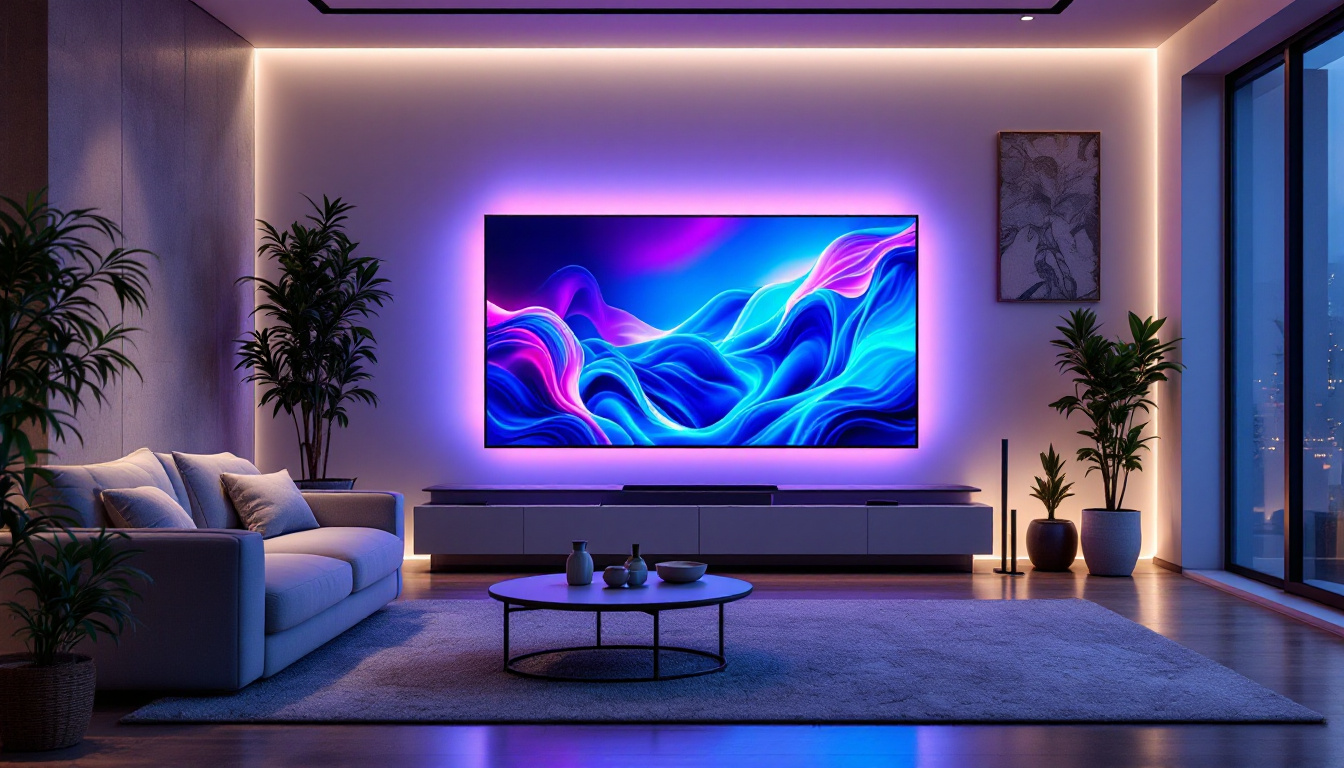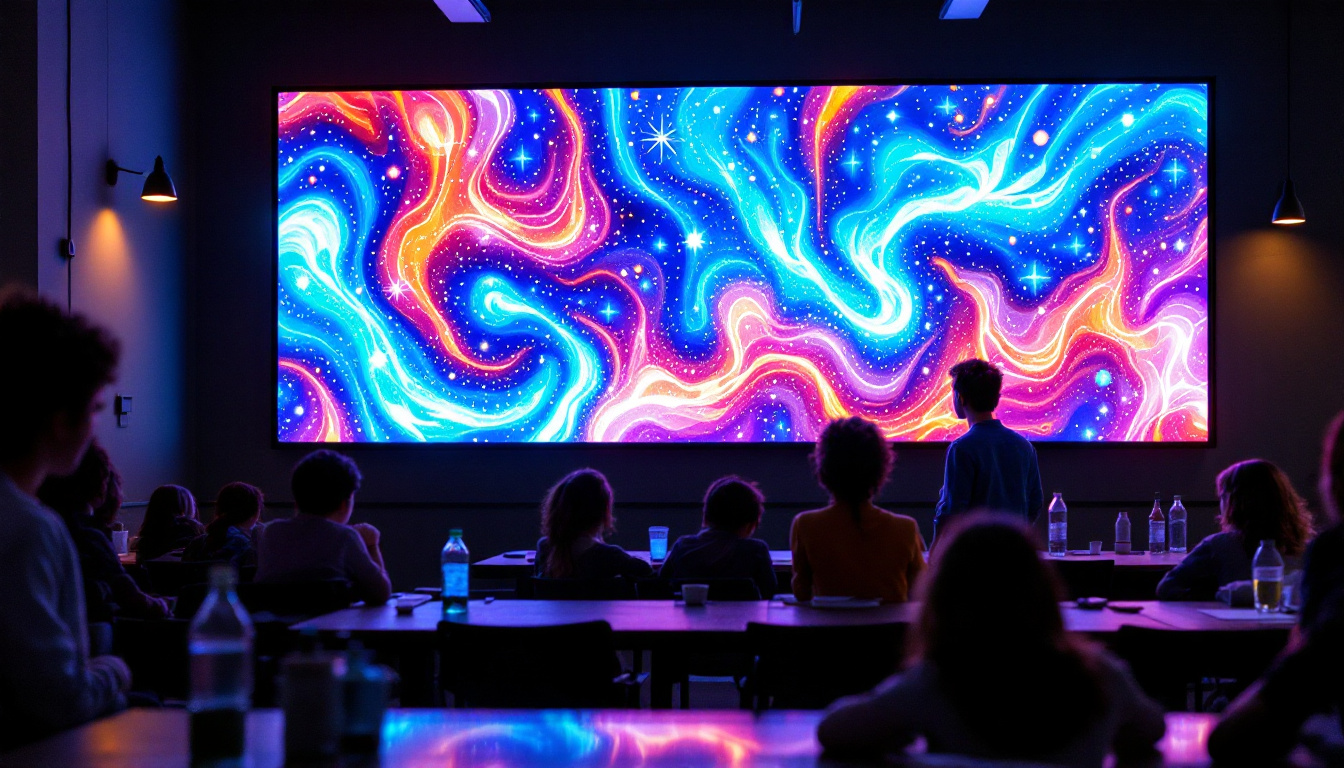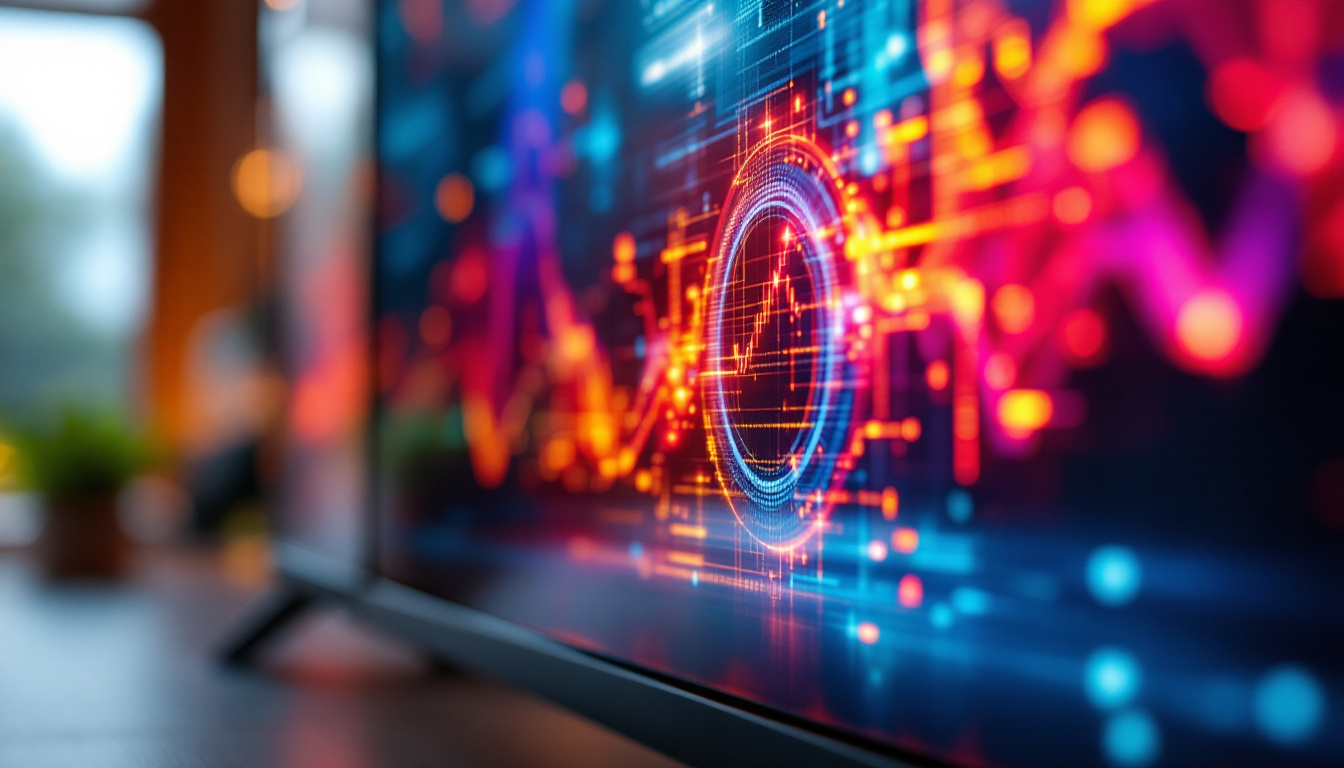In the modern world, visual communication has taken on a new dimension, thanks to advancements in technology. Among these advancements, LED displays have emerged as a powerful tool for businesses and organizations seeking to enhance their visibility and engagement. This article delves into the intricacies of LED displays, exploring their functionality, benefits, and applications, particularly through the lens of Flex Able Solutions.
Understanding LED Technology
Light Emitting Diodes (LEDs) are semiconductor devices that emit light when an electric current passes through them. This technology has revolutionized the display industry by providing a more efficient, durable, and vibrant alternative to traditional display technologies such as LCD and CRT.
The Basics of LED Displays
LED displays consist of an array of tiny LEDs arranged in a grid format. These displays can produce a wide range of colors by varying the intensity of red, green, and blue light emitted from each LED. The combination of these colors creates the full spectrum of visible light, allowing for stunning visuals and dynamic content.
There are two primary types of LED displays: direct view and backlit. Direct view LED displays are made up of individual LED modules that can be assembled into larger screens, while backlit LED displays use LEDs to illuminate a liquid crystal display (LCD) panel from behind. Each type has its own advantages and is suited for different applications. For instance, direct view LED displays are often used in large outdoor advertising billboards and stadium screens, where brightness and visibility in sunlight are critical. In contrast, backlit LED displays are commonly found in televisions and computer monitors, offering excellent color reproduction and energy efficiency.
How LED Displays Work
LED displays operate on a simple principle: when electricity flows through the semiconductor material of the LED, it excites the electrons, causing them to emit photons, or light particles. The color of the light emitted depends on the materials used in the semiconductor. By controlling the voltage and current, the brightness and color of the display can be adjusted.
In a typical LED display, a controller manages the input signals and converts them into a format that can be displayed on the screen. This allows for real-time updates and dynamic content, making LED displays ideal for advertising, information dissemination, and entertainment. Additionally, the modular nature of LED technology means that displays can be easily scaled up or down to fit specific needs, whether for a small retail space or a massive outdoor venue. Furthermore, advancements in LED technology have led to the development of organic LEDs (OLEDs), which offer even greater flexibility and contrast, paving the way for innovative applications in both consumer electronics and architectural lighting.
Benefits of LED Displays
LED displays offer numerous advantages over traditional display technologies, making them a popular choice for a wide range of applications. From energy efficiency to versatility, the benefits are compelling.
Energy Efficiency
One of the standout features of LED technology is its energy efficiency. LED displays consume significantly less power compared to traditional displays, which translates into lower operating costs. This efficiency is particularly beneficial for large installations, such as billboards and digital signage, where energy consumption can quickly add up.
Moreover, LED displays generate less heat, reducing the need for additional cooling systems. This not only contributes to energy savings but also extends the lifespan of the display, making it a cost-effective investment in the long run. The reduced energy consumption also aligns with growing environmental concerns, as businesses increasingly seek to minimize their carbon footprint. By opting for LED technology, companies can demonstrate their commitment to sustainability, which can enhance their brand image and appeal to eco-conscious consumers.
Brightness and Visibility
LED displays are known for their exceptional brightness, which makes them visible even in direct sunlight. This characteristic is crucial for outdoor applications, where visibility can be a challenge. The high contrast ratio of LED displays ensures that images and text remain clear and vibrant, regardless of the ambient lighting conditions.
Additionally, the wide viewing angles of LED displays allow for optimal visibility from various positions, making them suitable for crowded environments and large audiences. This feature is particularly advantageous for events such as concerts, sports games, and festivals, where attendees may be spread out across a large area. The ability to capture attention from multiple angles ensures that important messages and advertisements reach the maximum number of viewers, ultimately enhancing engagement and effectiveness.
Durability and Longevity
LED displays are built to withstand harsh conditions, making them ideal for both indoor and outdoor use. They are resistant to shock, vibrations, and extreme temperatures, which is essential for installations in challenging environments. This durability translates into lower maintenance costs and longer operational lifespans, often exceeding 100,000 hours.
As a result, businesses can rely on LED displays for consistent performance without the frequent need for replacements or repairs. Furthermore, many LED displays come with protective coatings that enhance their resilience against environmental factors such as moisture and dust, further extending their usability in diverse settings. This robustness makes them a preferred choice for industries ranging from retail to transportation, where reliability is paramount. In addition, the modular design of many LED systems allows for easy upgrades and repairs, ensuring that businesses can keep pace with technological advancements without a complete overhaul of their display systems.
Applications of LED Displays
The versatility of LED displays allows them to be used in a variety of settings, each tailored to meet specific needs. From advertising to information sharing, the applications are vast and varied.
Advertising and Marketing
One of the most prominent applications of LED displays is in advertising and marketing. Retailers and businesses utilize LED screens to showcase promotions, product launches, and brand messages. The dynamic nature of LED displays allows for eye-catching animations and videos that capture the attention of potential customers.
Outdoor LED billboards have become a staple in urban environments, providing high-impact advertising opportunities. Their ability to display real-time content means that businesses can easily update their messages to reflect current promotions or events, maximizing engagement and reach.
Public Information and Wayfinding
LED displays are also widely used for public information and wayfinding. Airports, train stations, and public transportation systems utilize LED screens to provide real-time updates on schedules, delays, and important announcements. This enhances the travel experience and ensures that passengers are well-informed.
In addition, municipalities use LED displays for community announcements, emergency alerts, and event promotions, fostering a sense of connection and engagement among residents.
Entertainment and Events
In the entertainment industry, LED displays play a crucial role in enhancing the viewer experience. Concerts, sporting events, and festivals often feature large LED screens that display live feeds, graphics, and interactive content. This not only captivates the audience but also creates a more immersive experience.
Moreover, LED displays are increasingly used in theaters and performance venues, providing dynamic backdrops and visual effects that complement live performances. The versatility of LED technology allows for creative staging and production design, elevating the overall impact of the event.
Flex Able Solutions: Leading the Way in LED Technology
Flex Able Solutions is at the forefront of LED display technology, offering innovative solutions that cater to a diverse range of industries. With a commitment to quality and customer satisfaction, the company provides tailored LED display systems that meet the unique needs of each client.
Customizable Solutions
One of the key strengths of Flex Able Solutions is its ability to deliver customizable LED display solutions. Whether it’s a large outdoor billboard or a compact indoor screen, the company works closely with clients to design displays that fit their specific requirements. This level of customization ensures that businesses can effectively communicate their messages and engage their target audiences.
Flex Able Solutions also offers a variety of pixel pitches, sizes, and configurations, allowing clients to choose the best option for their intended application. This flexibility is essential in a rapidly evolving market where visual communication needs are constantly changing.
Advanced Technology and Features
Flex Able Solutions incorporates the latest advancements in LED technology to provide high-quality displays that stand out in any environment. Features such as high resolution, improved color accuracy, and enhanced brightness ensure that content is displayed with stunning clarity and vibrancy.
Additionally, the company offers integrated solutions that include content management systems, enabling clients to easily update and manage their display content. This user-friendly approach simplifies the process of keeping information current and relevant, further enhancing the effectiveness of the display.
Commitment to Sustainability
In an era where sustainability is paramount, Flex Able Solutions is dedicated to providing eco-friendly LED display options. The company focuses on energy-efficient products that minimize environmental impact while delivering exceptional performance. By choosing LED technology, clients can reduce their carbon footprint and contribute to a more sustainable future.
Furthermore, the longevity of LED displays means less waste and fewer replacements, aligning with global sustainability goals and practices.
Conclusion
LED displays have transformed the landscape of visual communication, offering unparalleled benefits in terms of efficiency, visibility, and versatility. As demonstrated by Flex Able Solutions, the potential applications of LED technology are vast, ranging from advertising and public information to entertainment and events.
With the continuous evolution of LED technology, businesses and organizations have the opportunity to leverage these displays to enhance their messaging and engage their audiences effectively. As the demand for innovative visual solutions grows, companies like Flex Able Solutions will continue to lead the way, providing cutting-edge products that meet the ever-changing needs of the market.
In a world where first impressions matter, investing in high-quality LED displays is not just a trend; it’s a strategic move that can elevate a brand’s visibility and impact. Embracing this technology is essential for any organization looking to thrive in today’s competitive landscape.
Discover LumenMatrix LED Display Innovations
Ready to elevate your visual communication strategy with the latest in LED display technology? Look no further than LumenMatrix, a pioneer in crafting immersive and dynamic visual experiences. From Indoor and Outdoor LED Wall Displays to specialized solutions like Vehicle LED Displays and LED Sports Displays, LumenMatrix offers a comprehensive range of products designed to captivate your audience and amplify your message. Embrace the future of digital signage with our state-of-the-art LED solutions that promise not only to enhance brand visibility but also to revolutionize the way you connect with your audience. Check out LumenMatrix LED Display Solutions today and join the visual revolution!

